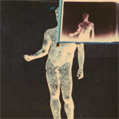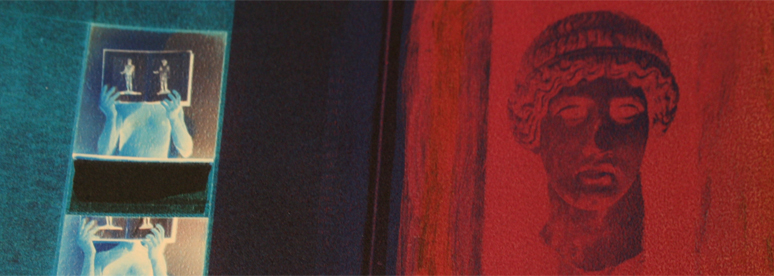PAST 17th STREET GALLERY EXHIBITION - OAS MAIN BUILDING

Stereo Portraits / Estereoretratos
Self-portraits by Paraguayan artist Bernardo Krasniansky
February 4, 2001 – March 30, 2001
AMA | OAS Gallery
OAS Main Building
17th Street, NW (Corner of Constitution Ave.)
Washington, DC 20006
THE EXHIBITION
“Stereo Portraits / Estereoretratos,” is a series of new works by Paraguayan artist Bernardo Krasniansky. This exhibition brings to Washington a series of approximately sixty self-portraits in which the artist reflects on the very idea of portraiture through exploring multiple means of duplication, posing questions of exactly what duplication is and ultimately presenting dual presences of these images.
Born in 1951 in Asuncion, Paraguay, Krasniansky studied painting with Leonor Ceccotto and graduated in Communications and Arts from the University of Sao Paulo in Brazil. In 1977, he exhibited at galleries in Asuncion and Porto Alegre and at the International Ibero-American Festival in Lima. He has received honors including prizes at the Brenson & Hedges Awards at the Museum of Contemporary Art in Asuncion (1982) and at the General Motors Awards at the Museum of Contemporary Art of Asuncion in 1998. His works were also shown at the Monica Filgueiras de Almeida Gallery of Sao Paulo.
Krasniansky is also no stranger to the Art Museum of the Americas, having exhibited his piece “Book IV/Heat/Boggiani/Paraguay” (1999) in the museum’s “Mastering the Millennium: Art of the Americas” group exhibition in May 1999.
The series of self-portraits currently being produced came into development beginning in May 1999, when the artist took Polaroids of two Renaissance portraits at the National Gallery in Washiongton. Sixty works are included in this show, most of which are transfers onto linen and cotton paper from digital photos and photocopies, as well as from Polaroids. Each of these works measures just 30x40 cm.
The artist has coined the term “Estereoretratos” (from the Spanish “estereoretrato” – meaning “stereograph”) for these works. This medium was used largely at the turn of the 20th century. Krasniansky does not use this technique to attempt to create optical illusions, but rather to comment on the ways in which people in other time periods viewed their world.
Krasniansky has been using photocopies as a form of expression since 1975, and began to develop his concept of “stereo portraits” from his first readings of Leonardo da Vinci in 1977. t wasn’t until 1995 that he began to produce his “book pages,” involving the reproduction of either two open book pages or simply a detail, reproduced as negative images (leaving yellow lights as intense blues, and stressing other colors particular to negatives – greens, yellows, and magentas). Krasniansky manipulates the color of the original image either by using a color flash or by using colored light produced with gel as a reflector.
Krasniansky’s “Stereo Portraits” focuses more on conflicts involved in reproduction than on the values of likeness. These are duplications of originals that become originals in and of themselves, as art critic Ticio Escobar points out, “in praise of the duplicate.” He continues to say:
“Krasniansky’s work has always dealt with the struggle between the symbol and the object. Now it approaches the paradox of the duplicated portrait by various avenues. On the one hand he tries stereography, the 19th century techniques of creating an impression of volume by superimposing two images. On the other hand, Krasniansky confuses the procedure of representation by introducing successive approximations. Much of [his] figurative strategy deals with superimposing successive layers of language that bandage reality and displace its truth.”


